Deenethorpe plane crash - How villagers from a hamlet near Corby were saved from an aircraft explosion by heroic crew members
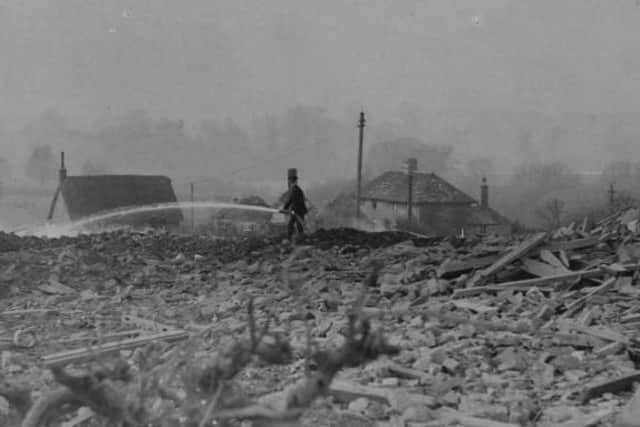

Villagers had a miraculous escape when a US bomber laden with 6000lbs of bombs and 2000 gallons of fuel crashed soon after take off and exploded 20 minutes later just metres from their homes in Deenethorpe, writes Lodge Park History Review Editor Mike Murray, 78 years to the day from the crash. Only the actions of crew members enabled residents to escape into the surrounding fields before a huge explosion devastated their community.
Nestling in the Northamptonshire countryside a few miles north of Corby, the village of Deenethorpe had recently been thrust into the front line of the air war over Occupied Germany.
Advertisement
Hide AdAdvertisement
Hide AdThroughout the summer of 1943 a huge airfield, one of hundreds built during WWII, was carved into farmland next to the village where fewer than 100 people lived in 32 houses or cottages.
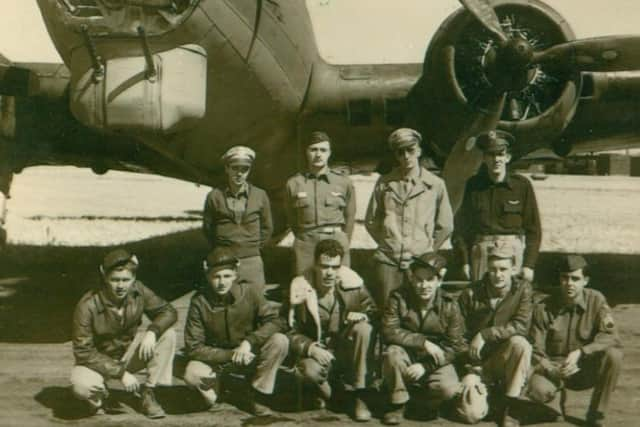

In early November of that year the American 401st Bomb Group moved into the base and with several thousand personnel the airfield dwarfed the village with which it shared a name. The 401st flew its first operational mission in late November 1943 when 20 aircraft were dispatched to attack targets in Bremen. Another mission followed on 1st December when the group attacked Solingen in Germany. For the villagers in Deenethorpe and nearby Upper Benefield and Weldon, the sight and sounds of the four-engined aircraft straining to take off with their heavy load of bombs and fuel must have come as something of a shock.
However, for the residents of Deenethorpe, a far greater shock was soon to come. The morning of December 5 dawned cold, bright and clear. There was a slight breeze and a few scattered clouds. On the airfield the ground crews had been busy since the early hours loading bombs, ammunition and fuel into the 22 aircraft due to be dispatched on the day’s mission.
They also had to scrape the ice off the aircraft as overnight temperatures had been below zero. The 220 aircrew who would fly the day’s mission had also been woken early and after breakfast made their way to briefings to learn the details of the mission before collecting their kit and heading out to their aircraft. The target was a ball-bearing plant in Paris and strict orders were given that the it should not be bombed unless it could be clearly identified for fear of killing French civilians in the surrounding residential area.
Advertisement
Hide AdAdvertisement
Hide AdHaving taken part in the Group’s first mission in November, Lieutenant Walter B Keith and his crew, consisting of co-pilot 2nd Lieutenant Wardlaw M Hammond; navigator 2nd Lieutenant Carl T Floto; radio operator Staff Sergeant Benjamin C Musser; bombardier 2nd Lieutenant John J King; gunner Sergeant Harold J Kelsen; ball-turret gunner Private Walden C Cohen; flexible gunner Staff Sergeant David Hadsell and tail gunner Sergeant Robert V Kerr, were scheduled to fly their second mission on this day.
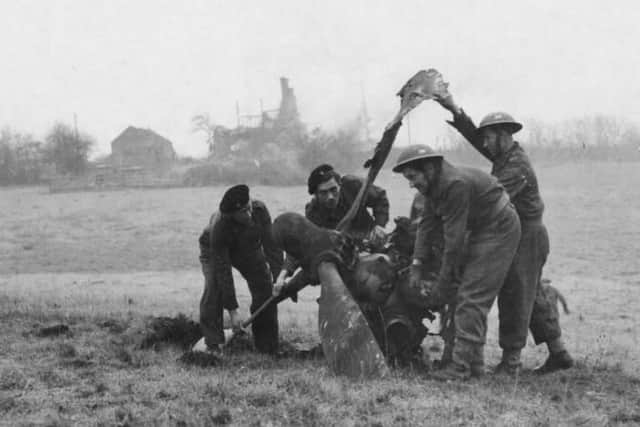

For the nine young Americans it would be another raid crossed off on their way to the 25 needed before they could return to the USA. They had named their B-17 Flying Fortress bomber Zenobia El Elephanta, after a 1939 comedy film starring Oliver Hardy. In the UK, the film was retitled as Elephants Never Forget and it was certainly fated to bring about an unforgettable day, although certainly not a comedy, for Deenethorpe.
The first of the 22 aircraft thundered down Deenethorpe’s runway at 08.30am and took off directly over the village. However, as Zenobia El Elephanta started her take-off run it soon became clear to the crew that something was wrong. Ice began to form on the wings reducing the amount of lift they provided and adding drag to the heavily laden aircraft.
Worse was to follow as the pilots suddenly found themselves in the turbulent air left behind by the bomber that had taken off seconds ahead of them. Losing control of the aircraft, which refused to lift from the ground, the pilots were helpless as the end of the runway approached.
Advertisement
Hide AdAdvertisement
Hide AdFrom his position in the radio room, Sgt Musser, the radio operator, glanced out of his window in the side of the aircraft to find he was looking down at the runway with a sheet of sparks being thrown up from the port wing tip as it dragged along the concrete. Travelling at more than 100mph the doomed aircraft slewed off the runway and down the hill towards Deenethorpe.
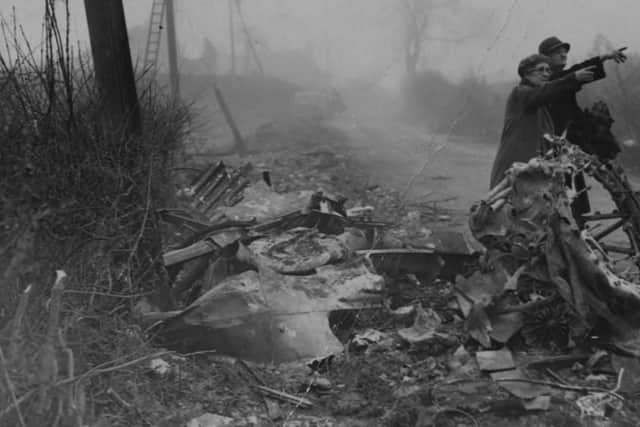

Still struggling to regain some control in the cockpit the two pilots were horrified to spot that directly in the aircraft’s path was a substantial stone barn. Lt Keith realised that hitting the barn would result in an enormous explosion and the instant death of his crew. His only chance was to lift the aircraft off the ground and stall it to lose as much speed as possible and bring the aircraft to a safe halt.
He planned to clear the barn whilst carrying out this manoeuvre. Putting their feet on the instrument panel Lt Keith and his co-pilot Lt Hammond pulled back on their control columns with all their strength. The aircraft responded and lifted off the ground stalled and dropped back on to the roof of the barn.
The tail of the aircraft broke off in the collision and rolled to a stop away from the rest of the wreckage. Having crashed down on top of the barn, the main section of Zenobia El Elephanta was now resting among the stone rubble, badly damaged and on fire. In the nose section the navigator Lt. Floto and the bombardier Lt. King were badly injured and trapped. The remaining seven crew members were unhurt and were able to extract themselves from the wreckage.
Advertisement
Hide AdAdvertisement
Hide AdTheir thoughts immediately turned to rescuing their trapped colleagues and warning the residents of the village. They knew that the aircraft would explode with devastating consequences if the fire reached the bomb bay and aviation fuel tanks. Within a few minutes of the aircraft hitting the barn, the airfield’s fire tender arrived at the site along with military policemen who had witnessed the crash and rushed to help.
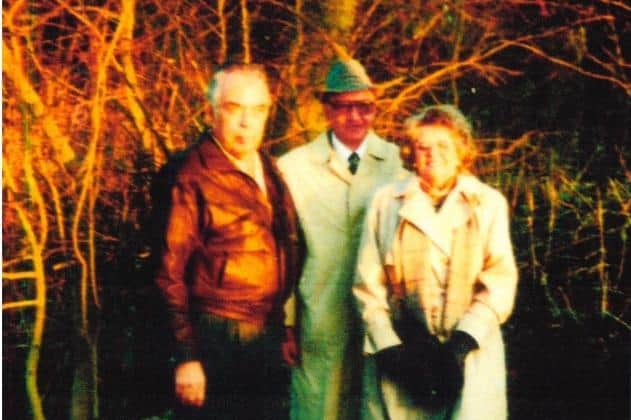

The navigator was pulled from his position by Master Sergeant Earl K Williams and Master Sergeant Francis F Snider while two others, Captain Ralph J White, and Corporal William N Luna, managed to extricate the wounded bombardier. The uninjured crew members ran into the village and started to warn the residents to evacuate the area.
On hearing the warning the villagers set off as quickly as possible into the surrounding fields. Helping the elderly, they took cover in ditches, behind haystacks or trees. Albert Day, the village’s air raid precaution warden, recalled: “We were just getting breakfast when I heard an airman shout. We left things as they were and, seeing that my family was all right, I went round to help old Mrs Knighton”
Mrs Knighton was an 82-year-old widow who lived next door to the Day family. Wrapping her in an overcoat Albert helped her into the field behind their houses where they sheltered with the rest of his family.
Advertisement
Hide AdAdvertisement
Hide AdMrs Mundy and her children also had a miraculous escape. “I was just preparing breakfast for my two children when I heard someone shout to us to get as far away from the village as we could,” she said. “We left our breakfast and I finished dressing the children as we ran along towards some haystacks in a field. I had not heard the plane crash”.
Mr Swann, whose home was less than 30 metres from the burning aircraft rushed his wife, two daughters and grandson to safety. As the villagers in their various hiding places watched the growing fire, the inevitable occurred. Less than twenty minutes after coming to rest the bombs and fuel exploded, the sound being heard in Kettering, 10 miles away.
The nearest buildings took the full brunt of the explosion and were destroyed but there was not a single house in Deenethorpe that escaped damage. Roofs were blown off and not a window pane remained intact. Several buildings caught fire as burning wreckage from the aircraft was hurled in all directions. Miraculously the only injury sustained among the residents was to Mrs Redmond who suffered a minor cut from flying glass.
Fire crews from Corby, Kettering and Thrapston were all involved in bringing the fires under control. While searching the wreckage of one cottage, three firemen from Kettering, Mr B. Wall, Mr R. Robin and Mr A. Dobres, were injured when part of the building collapsed.
Advertisement
Hide AdAdvertisement
Hide AdWith the majority of homes in the village uninhabitable, most residents were moved to Deene Park where they were put up until their houses were repaired. Lieutenant Colonel Clayton A Scott took charge of the emergency and had bedding and food delivered, including a crate of oranges, to the amazement and delight of the villagers. “We hadn’t seen one of them for years,” said the village police constable. “Once we knew no lives were lost we’d almost have gone through it all again for another shipment of oranges!”
Colonel Harold W Bowman, commanding officer at Deenethorpe, commended the work of the 1199th Military Police in a letter to the Provost Marshal.
He singled out Sgt John Rilko, who acted on his own initiative to round up his men and move nearby villagers to a place of safety, Staff Sergeant William B Koll and Sergeant Arnold Reasoner.
"The efficiency and dispatch with which they dispersed bystanders, helped with the rescue of the crew and routed civilians from homes in the danger area prevented an even greater tragedy, Please convey my personal thanks to these three men and accept my congratulations on a job well done by you and the 1199th," he said.
Advertisement
Hide AdAdvertisement
Hide AdMrs Ainsworth Taylor, wife of the Rector of the parish rector, was also full of praise: “We all realise that if it had not been for the quickness with which your men rushed us to safety, there would have been many a sorrowful home in Deenethorpe today."
The last word should go to one of the villagers who was there on that day in December 1943. “There is no doubt about it. We owe our lives to the American boys who gave the warning so promptly”.
In the aftermath of the accident the crew of Zenobia El Elephanta was split up. Those who had survived unhurt had a break of two weeks and then resumed combat operations while the two injured crew members were treated at an American hospital and eventually returned to service. All of them survived the war. Lt Keith was shot down leading a different crew in May 1944 and spent the remaining 12 months as a prisoner of war as did Lt Floto.
Lt Hammond was assigned his own crew and went on to complete 35 missions over Europe. Nearly eighty years on, there is still a crater visible at the site where Zenobia El Elephanta exploded.
Advertisement
Hide AdAdvertisement
Hide AdOn 5th December 1993, Tail Gunner Robert Kerr (in brown jacket) and Radio Operator Benjamin Musser returned to Deenethorpe. In the images here they are standing with Mrs Musser at the exact point their aircraft crashed and exploded. The top photo was taken at 08.38am, fifty years to the minute after the aircraft skidded to a halt on the outskirts of the village. The explosion of the aircraft, its bombs and fuel, left a huge crater.
In the subsequent fifty years this crater had become shallower and overgrown. It was still easily recognisable when the two veterans returned to the scene of their lucky escape.